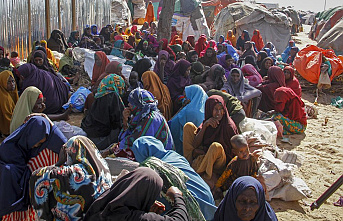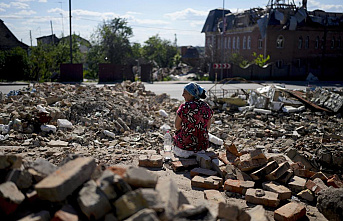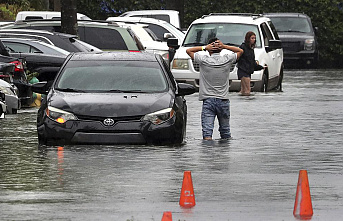The eruption of volcano Taal in the Philippines, early this morning she started spitting lava, has forced the evacuation of more than 16,700 people in the municipalities of the surroundings, while the ashes reached Manila, the country's capital, located about 60 kilometres. The displaced people are refugees in 45 evacuation centers provided by the authorities in the municipalities most affected in the province of Batangas, according to data from the provincial Government. The spokesman of the Civil Defense of the region, Lexie Masiglat has informed that the operation of evacuation is still in place, so that the number of evacuees will increase in the next few hours.
The airport, Ninoy Aquino Manila and the Clark —about 90 kilometers north of the capital— have been partially resumed its operations after they closed this Sunday due to the lack of visibility caused by the ash and the risk that the landing slip. Since Sunday have been canceled more than 200 flights and thousands of passengers remain stranded at the airports waiting for their flights to be rescheduled.
of The total number of evacuees, approximately 2,000 reside in the small island within lake Taal, which makes up the volcano, on the slopes of the same. As you begin to expel lava, the eruption has gone on to be magmatic, and there is a risk of occurrence of a tsunami volcanic, as the Taal —one of the smaller volcanoes in the world— is located within a lake, as explained by this Monday, the Institute of Volcanology and Seismology of the Philippines (Phivolcs).
expand photo A column of ash surrounds this Sunday, the crater of the volcano Taal in the Philippines. Ezra Acayan GettyThe director of Phivolcs, Renato Solidum, said at a press conference that the source of lava does not necessarily mean that the volcano has entered a phase of "explosive eruption dangerous", although it is a possibility should be ruled out. Phivolcs raised the Sunday in a phased manner the alert from level 1 to 4 on a scale of 5, after which intensify the activity in the crater of the source table, and generate an eruption of smoke up to 10 kilometers in height. The alert level 4 entails expulsions mild and lava that the eruption is dangerous is imminent, so it is recommended the evacuation of all populations located within a radius of 14 kilometers from the volcano. In the last 24 hours have been recorded a hundred earthquakes of volcanic origin, 32 of them noticeable with strong intensity. An earthquake was this morning a magnitude of 3.8.
they have Also suspended classes and work in government facilities in Manila and the region of Calabarzon, where they are located in the provinces of Batangas and Cavite, the most affected by the eruption. In the areas surrounding the volcano, from this Sunday everything is covered by a thick layer of ash and toxic smoke, so the Health Department recommended to the citizens not being outdoors and if they do they wear sunglasses and masks, although these have been used up in Manila. Also advise against driving, as visibility is limited and the ground is slippery because of the ash. According to the website Rappler, a person has died and three have been injured in a traffic accident in the province of Laguna caused by the lack of visibility.
Teams of the philippine Red Cross have also been shifted to the area to help in the work of evacuation, and the Armed Forces of the Philippines are on alert, in addition to sending five trucks to move the evacuees.
The volcano, which has erupted 33 times since 1572, killed some 1,300 people in an eruption in 1911, and 200 in 1965. It is an island within lake Taal, which is situated within a caldera formed earlier by a very large eruption and forms part of a volcanic chain that extends for the western region of the island of Luzon.
Date Of Update: 13 January 2020, 16:00










